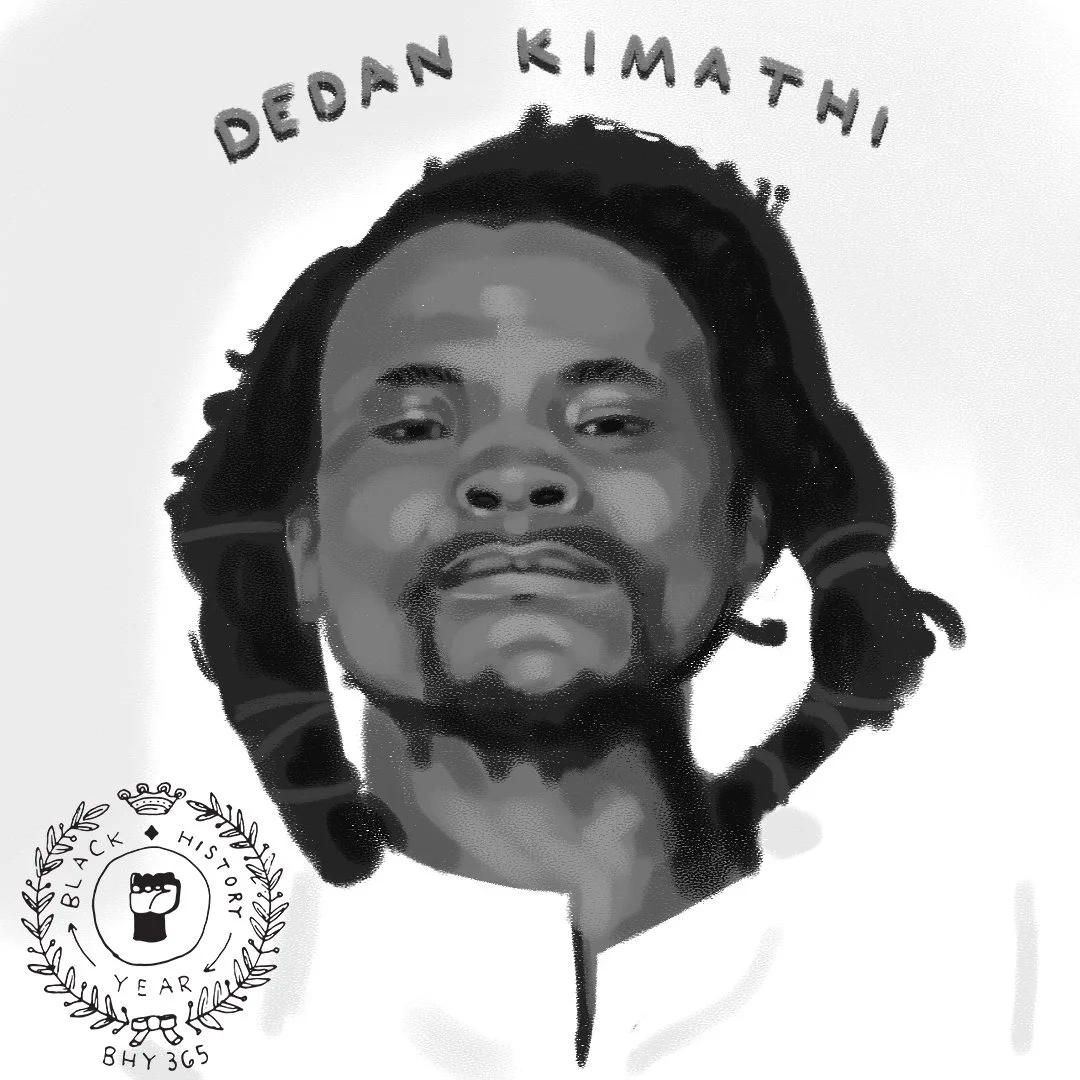Did you know the first organized hockey league was for and by black people? Yes Canada’s first organized hockey league was The Coloured Hockey League formed by original teams like Africville Sea-Slides, The Halifax Eurekas, The Dartmouth Jubilees, and The Halifax Stanley. It was formed in 1895-1930, pre-dating the formation of the NHL by more than 20 years. It has been kept a secret for century and some change. CRAZY!
Black History 365 | #45 Dedan Kimanthi
This is Dedan Kimanthi, a rebel field marshal considered to be the most wanted Mau Mau fighter of all was captured and executed in October of 1956. His wife Mukami was detained and tortured in an attempt to get her to expose his whereabouts. In 1941, Kimathi was enlisted as a sweeper with the King’s African Rifles (KAR) only to desert the role soon after learning of the terrible conditions African soldiers were subjected to. Between 1947 and 1949 Kimathi joined the Kenya African Union (KAU), the first national political party in Kenya, and served as a secretary for the Ol Kalou branch. He rose to prominence within the movement in the early 1950s, first acting as an oath administrator, a method of initiation and a way of ensuring loyalty within the Mau Mau movement. He quickly became a leader of the Mau Mau fighters who migrated into the forests to fight the British forces after the declaration of the State of Emergency in late 1952. An although British media outlets tried to paint him as scared and helpless in his final moments. The last video of Kimathi reveals the opposite.
Black History 365 | # 39 The Mau Mau Rebellion
The Mau Mau Movement or Rebellion is the opposition of British rule in Kenya. In 1895 the British East India Company invaded and colonized Kenya. The British took land away from Kenyans and forced labor upon its people. Some Kenyans began to revolt 50 years later and the British began a brutal military campaign that included detention camps and torture. The British enacted a series of crazy taxes to ensure they would generate revenue. For instance, the hut tax. Where they forced a tax paid to the British government for each family-owned hut. This resulted in Kenyans having to work for someone else in order to pay this tax, if they didn’t pay, forced labor was their punishment. Another example was the poll tax, where Kenyans were required to work 60 days out of the year for the British government if they were not already employed by British settlers. Kenyans who originally occupied the land stolen by the British were deemed squatters, and by 1939 settlers could demand 270 days of work from these so-called squatters.
Years of this torture and exploitation spurred the growth of the resistance movement, The Mau Mau Movement in 1950. It was comprised of numerous ethnic groups within the Kenyan diaspora, but unity was promoted within the movement. The British responded by calling them savages and branded them as terrorists. The Mau Mau planned attacks on British farms, settlers, and indigenous Kenyans who were loyal to the British. In 1952, the British declared a state of emergency and began its military operations against The Mau Mau. After an eight-year battle roughly 11,000 Mau Mau were killed, while 32 British settlers were killed. Then the British set up detention camps where an estimated 160,000-320,000 Kikuyu were detained. These detention camps were “rebranded” by the British as rehabilitation camps where good citizenship was encouraged and where the people were re-educated away from the nationalist views introduced by The Mau Mau Movement. Leaked documents exposed this to be untrue. These documents confirm that detainees were isolated, tortured, raped, forced to work, and some even murdered — disease and starvation were apt to happen, and it did.
Black History 365 | #46 Nikki Giovanni
Did you know, Yolande Cornelia Giovanni, Jr. better known as Nikki Giovanni. The, writer, poet, and educator has the 2Pac coined term “Thug Life” tattooed on her forearm.
Black History 365 | # 47 Thomas Jennings
Did you know a black man, Thomas Jennings invented dry cleaning in 1821 making him also the first black man in the United States to be granted a patent.





